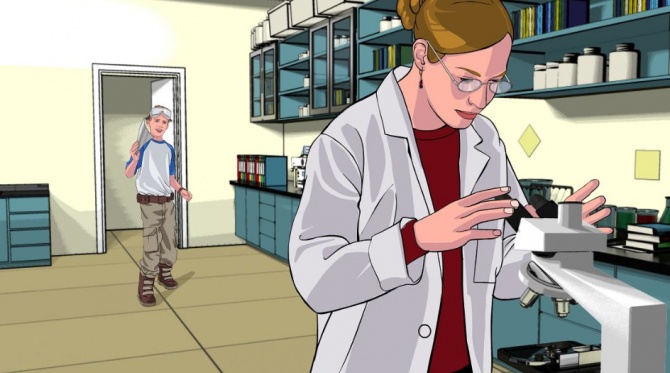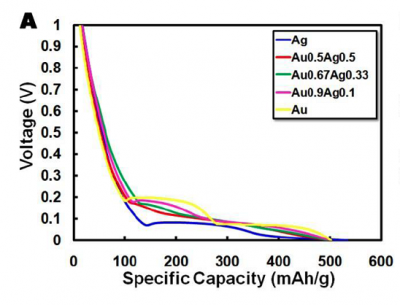20.109(F09): Mod 3 Day 5 Battery testing
Battery Testing
Introduction
In order to determine the capacity of each battery we will be testing each battery on a Galvanostat. This is a machine that can apply either positive or negative current in order to either charge or discharge a battery with a specific amount of current. As an example, look at your cell phone battery, if you have a typical LiCoO2 lithium ion battery you will notice that it has a voltage (3.7 V) and a capacity (mine is 1100 mAh). We know that LiCoO2 has a theoretical capacity of 130 mAh/g, so in my battery I must have about 8.5 g of active material in my cell phone battery. The way that the capacity and voltage was determined was identical to what you will be doing in this lab, i.e. they hooked up my battery to a Galvanostat and applied a constant current (1100 mA) in order to charge the battery in one hour, and the applied a negative current of 1100 mA to discharge my battery in one hour. The discharge graph shown here is an example of the curve that you will be generating.Now you should know the capacity of the battery material that is made. Now determine the charge rate. We will be testing everything at 1C, this means that when we charge the battery it should take one hour, and it should discharge in one hour. Since every electrode weighs a little different, the charge/discharge rate will be slightly different. As an example, if I have an electrode of FePO4•H2O that has 1 mg of active material, then in order to discharge it in one hour I have to put a negative current of -143 uA.
The electrodes that were prepared during last session were placed in a vacuum oven and dried at 100oC for four hours. These are all in a glove box. Instructions will be given at the glove box on how to assemble battery and crimp the battery, then on how to run the battery on Galvanostat.

